Everything you need to know about content creation
It's no secret that content is king on the streets of the web. In this digital era, creating quality content is essential for the success of any online business.
However, many content creators need help knowing where to start or how to produce engaging material that effectively grows their brands and sells their products and services.
Whether you're a small business owner looking to create a blog or a marketing professional tasked with producing engaging social media posts, creating content can be time-consuming and challenging.
In this post, we'll look at some of the basics of content creation, including tips for developing content ideas and creating a content strategy that works for your business.
What is content creation?
Content creation is the process of generating new content for use on the internet. This can include:
- Writing articles
- Creating videos or podcasts
- Developing graphics or pictures
- Producing any other material that can be published online
Content creators aim to produce content that’s engaging, informative, or entertaining. The goal is to attract an audience and keep them engaged. Content creation has become increasingly important in recent years as the demand for online content has exploded.
With so much content available, it can be difficult to stand out from the crowd. However, content creators who can produce high-quality, original content that resonates with their audience always win the game.
Why is content creation so important?
Creating content has become an inevitable part of running a business. With the increasing advancement in technology and the digital era, most businesses have shifted from traditional marketing methods to a more modern method known as content marketing — using content to engage your audience and sell your products and services.
Here are some of the reasons why content creation is so important for businesses in this digital era:
1. Provides value to your target audience
Your target audience is the group of people who are most likely to buy from you.
You should always keep your target audience in mind when creating content. This means creating content that’s relevant to their interests and needs and adds value to them.
By providing value to your target audience through your content, you’ll build relationships with them and establish yourself as a go-to source for the information and solutions they need.
2. Establishes trust in your brand
For people to buy from you, they need to trust you first. Content creation is a great way to build trust with your target audience by providing accurate, reliable information.
As they begin to see you as a trusted source, they will be more likely to do business with you when they need what you sell.
3. Positions you as an authority figure
When you consistently create high-quality content, you position yourself and your business as experts in your industry. This can help attract new customers and business opportunities and build loyalty among existing customers.
4. It helps you attract and engage customers
By creating content targeted to your ideal customer, you can attract them to your website or blog and then engage with them once they’re there.
Once you have their attention, you can move them further down the sales funnel by providing even more valuable content that leads them toward becoming paying customers.
5. Delights existing customers
In addition to attracting new customers, it’s also important to keep the ones you already have happy. One way to do this is by creating content that delights them – whether it’s an informative blog post or a helpful video tutorial.
Regularly publishing quality content can keep your existing customers engaged with your brand and prevent them from taking their business elsewhere.
6. Helps your business grow
Creating informative blog posts, helpful how-to guides, and other types of valuable content will not only help attract new customers but also convert them into paying ones.
Publishing regular content can help open up more growth opportunities for your business down the road.
Types of content
There are many different types of content — each with its purpose and target audience. The three most common types of content you’ll find on the internet include:
Website content
Your website is usually the first impression your potential customers will get about your business or company.
Website content includes things like blog posts, product descriptions, and service pages which you publish on your business’s official website. This type of content aims to inform and engage the readers while promoting your business.
Website content should be well-written and informative, but it shouldn't be overly promotional. The goal is to provide value to the reader while giving them a reason to visit your website again in the future.
Social media content
Another popular type of content is social media content. Social media content includes Tweets, Facebook posts, LinkedIn posts, and Instagram Stories.
This is the content you post on your business's social media pages and is meant to be timely and engaging. Social media content should be designed to start a conversation and get people talking about your brand.
Email content
Finally, we have email content, which includes newsletters, special offers, and announcements you send to your email list.
This type of content is designed to keep your customers or clients informed about what's going on with your company. Email content should be concise and to the point— no one wants to read a novel in their inbox!
Content formats
When it comes to content marketing, businesses have many content format options to choose from.
The format you choose for your content depends on your marketing goals and the type of audience you want to reach.
Some of the most popular content formats include:
Blog posts
Blog posts are a great way to generate leads and drive traffic to your website. They are easy to produce and can be written about any topic, making them perfect for businesses in any industry.
Blog posts are advantageous since you can repurpose them into other content formats (such as eBooks or infographics) with little effort.
Videos
Videos are incredibly popular—and for a good reason. People love watching videos because they are engaging and informative.
Thanks to platforms like YouTube and Vimeo, hosting and sharing your videos with a broad audience is now easy. To produce quality video content, you must invest in quality equipment and editing software.
You also need to put in enough time to learn how to use those tools properly before you start producing content.
Infographics
Infographics are visual representations of data or information — they are perfect for businesses that want to convey complex information in an easily digestible format.
Infographics are also great for social media because they are highly shareable. However, creating an infographic requires both design skills and data visualization expertise. If you don't have those skills, you may need to outsource the project to a professional content agency, like Strategically, to do it for you.
eBooks
eBooks are long-form content businesses use to establish themselves as thought leaders in their industry. They are among the best ways to provide the most value to your target audience in a continuous and non-disruptive form.
You can write eBooks and give them away for free on your website or sell them on platforms like Amazon Kindle Direct Publishing.
Keep in mind that writing an eBook is a significant investment of time and resources—so be sure you have a clear plan for promoting it before you start writing.
Whitepapers
Whitepapers are another type of long-form content that businesses use to showcase their expertise. Like eBooks, you can give whitepapers away on your website or sell them on third-party platforms.
The main difference between whitepapers and eBooks is that whitepapers tend to focus on solving a specific problem—while eBooks provide general information about a particular topic.
Newsletters
Newsletters are periodic emails sent to subscribers containing updates about your business or industry.
You can use newsletters to promote new products or services, announce company news, or simply keep your subscribers up-to-date on what's going on with your business. The key to success with newsletters is ensuring that the content is timely and relevant.
Case studies
Case studies provide readers with a detailed look at how your products or services have been used successfully by actual customers—which helps establish trust and credibility with prospective buyers who may be considering doing business with you.
However, writing a compelling case study requires access to customer data and strong writing skills—so it's not something that every business can do independently.
Podcasts
Podcasts are audio files that can be downloaded from the internet and played on computers or mobile devices—making them perfect for people who commute or have long drives as part of their daily routine.
Businesses use podcasts to reach new audiences and build thought leadership within their industry by featuring experts as guests on their shows.
If you don't have the necessary skills or are unsure how to start producing any of these types of content, consider hiring professionals to carry the burden for you.
How to develop an effective content strategy (10 Steps)
An effective content strategy is vital to the success of any content marketing initiative. A well-thought-out strategy will help you focus your efforts, produce quality content that resonates with your target audience, and achieve your business goals.
So how do you develop an effective content strategy?
1. Define your goals
The first step to developing an effective content strategy is defining your goals. What exactly do you want your content to achieve? Do you want to increase brand awareness? Drive traffic to your website? Generate leads?
Once you've identified your goals, you can create content that is specifically designed to achieve those goals.
2. Research your target audience
After you've defined your goals, the next step is to research your target audience.
Who are you trying to reach with your content? What are their demographics? What are their interests? What challenges do they face?
When you know who you're talking to, you can create content with your target audience in mind and effectively create content that resonates with them.
3. Run a content audit
Once you understand your goals and target audience, it’s time to conduct a content audit — look at your existing content and see what’s working and what isn’t.
A content audit will also help you better understand the gap in your current content offering. This will give you a better idea of what new types of content you need to create to achieve your goals.
4. Identify keywords
After conducting a content audit, the next step is to identify keywords. These are the words and phrases that people use when they search for information online.
When choosing keywords, think about the types of questions your target audience is likely to ask and then use those keywords throughout your website and blog posts. Identifying relevant keywords will help ensure that the right people see your content.
5. Determine the type of content to create
Next is to determine the type and format of content to create. As mentioned above, there are many different types of content (e.g., blog posts, videos, infographics, ebooks, and whitepapers).
Identify the type of content you want to create and keep in mind that different types perform well on different platforms.
The best way to determine which content will work best for you is to experiment with different types and formats and see which ones perform best with your target audience.
6. Find a content management tool/system
Once you know the type of content you want to create, find a content management tool or system that works for you.
This could be as simple as using Google sheets to outline your ideas or implementing a full-fledged content management system (CMS) like WordPress or Drupal.
Ensure you choose a system that helps you easily organize and manage your content to streamline your content creation process.
7. Outline content ideas
With a content management system in place, it's time to start brainstorming ideas for your content.
To ensure your content is both high-quality and relevant to your target audience, take time to create an editorial calendar or topics list that outlines the theme of each piece of content and when it should be published.
8. Create a content calendar
Once you have a list of content ideas, it's time to start putting them into a content calendar. A content calendar is a key to creating a successful content strategy.
It will help you map out what kind of content you want to create when you want to publish it, and where you want to share it.
This will help you stay organized and ensure you publish new articles regularly. Not sure how to get started? There are tons of great templates from sites like CoSchedule that can help you get started.
9. Publish and manage your content
Now it's time for the fun part-time to start publishing! But before you publish anything, ensure you edit and proofread your content thoroughly (or hire someone else to do it for you).
Once everything looks good, hit publish and share your article with the world! And don’t forget to promote your new piece of content on social media, in email newsletters, and on other channels where your target audience hangs out online.
10. Track results
Last but not least, it's important to measure the performance of your content so you can course-correct as needed along the way.
Use Google Analytics or another analytics tool to see how much traffic each piece of content brings in, what kind of engagement it's receiving, and how long people spend on the page.
Look at things like:
- Number of clicks
- Number of page visitors
- Engagement rates (likes, shares, comments, etc.)
- Conversion rates (how many people take the desired action)
These metrics will give you valuable insights into what's working and what isn't—and help you adjust your strategy accordingly.
Keyword research
Keyword research is the process of finding and selecting keywords that are relevant to your business or website. Keywords are the words or phrases people use to search for information online.
For instance, if you're a plumber, some of the keywords you might want to target would be "plumber," "plumbing," "leak," "drain," etc.
Choosing keywords wisely can help you attract more visitors to your website and improve your chances of ranking high in search engine results.
You'll need to use various tools and resources to do keyword research effectively. There are several free and paid keyword research tools available online. Some of the most popular ones include:
- Google Keyword Planner
- Google Search Console
- Semrush
- Ahref Keywords Explorer
- UberSuggest
You can also find helpful keyword research tips and guides by conducting a simple web search.
Once you've identified a list of potential keywords, you'll need to evaluate their relevance and competitiveness. Choosing the right keywords is essential to the success of your SEO efforts, so it's important to spend some time on this process.
How to Use Keywords to Optimize Your Content
Keyword research is an essential process that every content creator should conduct before producing any type of content. This is because it helps you identify keywords that rank in your industry so you can optimize your content to rank high on search engine results pages (SERPs).
When your content ranks high, it can easily be found by potential customers and increases your chances of making more sales.
Once you identify your target keywords, how do you use them to optimize content?
- Use them in your titles and headlines: This helps your content show up in more searches, and it also helps give readers an idea of what they can expect from your article.
- Use them throughout your content: As you're writing, work your keywords into your sentences and paragraphs in a way that sounds natural.
Remember, Google penalizes keyword stuffing— cramming as many keywords into your content as possible—so don't go overboard. A couple of strategically placed keywords should do the trick.
- Use keywords in your meta descriptions: These are the summaries that appear under your titles in search results. Including keywords in your meta descriptions helps your content show up in more searches.
- Use them in image tags and alt text: Whenever you upload an image to your website or blog, include relevant keywords in the image tags and alt text.
They help search engines understand what's in an image and help your content rank better.
How to conduct keyword research
You can use different methods to conduct keyword research, but some are more effective than others.
Here are some of the most effective methods you can use to conduct keyword research before you start creating content:
1. Use Google AdWords Keyword Planner
Google AdWords Keyword Planner is a free online tool anyone can use to research keywords.
Simply enter a seed keyword into the tool, and Google will return a list of related keywords and data on average monthly searches and competition levels. This data can help decide which keywords to target when creating content.
2. Check out your competitors' websites
Another way to get ideas for relevant keywords is to look at what your competitors are doing.
Visit their websites and see which keywords they target with their blog posts. You can also use a tool like SEMrush to research your competitors' keyword strategies and emulate them.
3. Ask your customers
Another great way to come up with relevant keywords is simply to ask your customers what they would search for if they were looking for your product or service online.
This method is especially effective if you have an existing customer base because you can reach out directly and ask them for input. You can ask your customers for their input via surveys, social media, email newsletters, or even in person.
4. Use Google Suggest
Finally, you can use Google Suggest to generate keyword ideas.
Simply start typing a seed keyword into Google's search bar and watch as Google auto-populates suggested search terms based on what others are searching for.
How to come up with content ideas
After conducting thorough keyword research and creating a list of your target keywords, the next thing to do is to come up with viable content ideas.
How do you come up with content ideas as a content creator?
Keep a running list of ideas
This is probably the most important thing you can do to never run out of content ideas. Whenever you think of something that would make a great piece of content, jot it down in a notebook or on your phone.
You can always refer to your list when feeling uninspired and pick something to write about, film, or design.
Look at what's popular in your industry
If something is popular in your industry, chances are it will make for good content. You can stay up-to-date on what's popular by reading trade publications, following influencers on social media, and attending industry events.
Once you know what's popular, put your own spin on it and make the content your own.
Ask your audience what they want
If you're struggling to develop content ideas, why not ask your audience what they want to see?
You can do this by surveying your email list or posting on social media asking for suggestions. This will also show your audience that you care about their interests and want to provide them with the best possible experience.
Use social media as a source of inspiration
Social media is a great place to find out what people are talking about and what’s trending.
Pay attention to the posts getting the most engagement and see if you can write about those topics in your own unique voice.
Check out the competition
See what sorts of content your competitors are putting out there and try to create something different that will make you stand out from the crowd.
Think about what you can do differently or better than they’re already doing, and run with it.
Check Google Trends
Google Trends is another excellent opportunity to find the best content ideas. This free tool shows you what people are searching for on Google, both in real-time and over time.
You can use it to see what topics are rising, so you can jump on them early and get ahead of the competition.
Use Quora
Another great source for finding new content ideas is Quora. This website is full of questions people are looking for answers to — which means it's full of potential blog post ideas, YouTube video ideas, and more.
Simply type in a keyword related to your niche, and you'll find plenty of questions you can answer in your content.
The content creation process (a step-by-step workflow)
Creating quality content is more challenging than it sounds. You must have a well-drawn-out plan and a straightforward workflow so you don't jumble up the steps and mess up the whole process.
Here is the step-by-step workflow you need to follow to create content that resonates with your audience and performs well for your business:
Step 1: Research
The first step in any content creation project is research. Examples of research you’ll need to do, as mentioned, include:
- Audience research to help you understand your target audience
- Keyword research to identify keywords to use when writing
- Content research to gather credible and accurate information to include in your article.
Step 2: Content ideation
Once you know your audience, it's time to start brainstorming ideas for your content.
This is where you'll develop a list of potential topics to write about. Try to create a mix of evergreen and timely topics, so your content has a longer shelf life.
Step 3: Content creation
Once you have a few ideas down, it's time to start writing! Remember to keep your audience in mind as you write; focus on delivering value and solving their problem.
Step 4. Proofreading and editing
Once you finish writing, always take time to proofread and edit your work.
Nothing will turn off your readers faster than typos and grammar errors. That's why editing your content is important before you publish it.
If possible, have someone else proofread it and help you identify errors, or use editing tools like Grammarly and ProWritingAid to edit thoroughly.
Step 5: Uploading and publishing
Once your content is ready, it's time to upload and publish it on your website or blog.
If you're using WordPress, this is as simple as creating a new post and pasting it into your text. Make sure everything looks good before you hit publish.
Once you’ve uploaded and formatted the content as appropriate, hit ‘publish’, and your content will go live — it will now be out there for people to start reading (and hopefully enjoying) what you've written.
Step 6: Promoting
Just because your content is published doesn't mean people will automatically find and read it— you’ll need to promote it if you want people to see it.
There are plenty of ways to promote content without spending a lot of money (or any money at all). Social media is a great way to get started; just share your post with all your followers and ask them to share it with their followers as well.
However, for the best results, use an omnichannel approach— promote your content on different channels (e.g., a combination of social media and email)
Step 7: Analyzing results
After publishing and promoting your content, the final step is to analyze the results to determine if your content reached the intended audience and achieved its intended purpose.
Some of the metrics you can analyze to see the performance of your articles include:
- Traffic
- SEO ranking
- Click rates
- Social share rate
- Likes and comments
- Sales or conversions
These metrics will help you know whether the content you wrote was a hit or a miss. You can use this information to repurpose your content strategy as appropriate in the future.
How do you know if your content is working?
If you’re creating content, it’s important to ensure it’s actually performing well— otherwise, you could be wasting time and effort on something that isn’t having the desired effect.
So how can you tell if your content is resonating with your audience? There are four key indicators:
Traffic
One of the easiest ways to measure the performance of your content is by looking at how much traffic it's getting.
If you have a piece of content that's getting a lot of traffic, that's a good sign that it's resonating with your audience. You can check traffic levels using a tool like Google Analytics.
Engagement
Another indicator of content performance is engagement.
Are people commenting on your blog post? Are they asking questions or leaving feedback? If so, that’s a good sign that they’re reading and engaging with your content.
You can also track the time spent on the page and average scroll depth to get an idea of how engaged people are with your content. Additionally, you can check the number of social shares and email subscribers.
Leads and conversions
If you’re using calls-to-action (CTAs) in your content, you should also track leads and conversions.
A lead is someone who takes action, like subscribing to your newsletter or filling out a contact form. A conversion is when a lead takes the desired action, like making a purchase or downloading a white paper.
If you see an increase in leads and conversions, that’s a strong indication that your content is performing well.
Brand awareness and reach
Finally, you should also track brand awareness and reach metrics. These include social media mentions, media placements, and even organic search results.
If you’re seeing an increase in social media mentions or media placements, it means your content is being seen by more people and generating buzz for your brand.
Likewise, an increase in organic search results means more people are searching for your brand or keywords related to your brand—both of which indicate that your content is working effectively.
Content creation toolkit: 10 must-have tools for content creators
With all the moving parts involved in content creation, it can be challenging to keep everything organized and on track.
That's where content creation tools come in. There are a lot of great content creation tools out there that you can use as a content creator.
Here are ten must-have tools for anyone who creates content regularly.
G Suite: Google Docs, Drive, Sheets, and Calendar

G Suite is a suite of productivity tools from Google that includes Google Docs (a word processing application), Google Drive (a cloud storage service), Google Sheets (a spreadsheet application), and Google Calendar (a calendaring application).
G Suite is an excellent tool for content creators because it allows you to create, store, and organize your content in one place. And best of all, G Suite is free!
Grammarly: Editing and proofreading
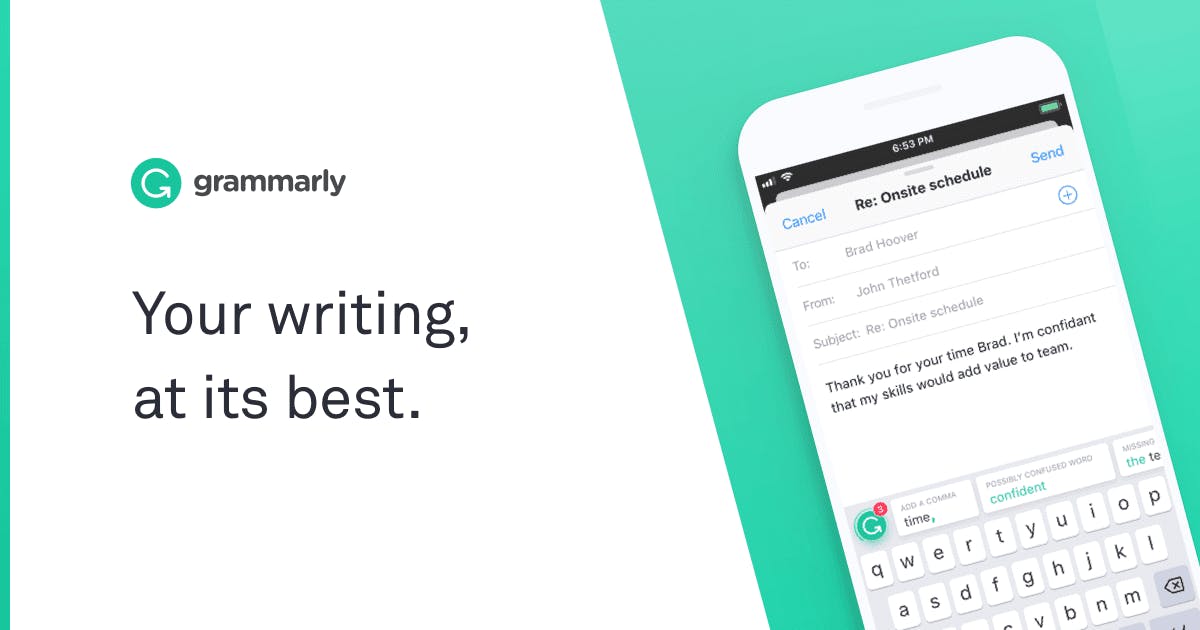
Grammarly is a grammar checker that helps you edit and proofread your writing. It's great for catching errors you might miss when proofreading your work.
Grammarly is free to use, but its premium version offers additional features, such as the ability to check for plagiarism.
Surfer SEO: SEO optimization

Surfer SEO is an SEO tool that helps you optimize your content for search engines. With Surfer SEO, you can find the right keywords to use in your content, analyze your competition, and improve your overall SEO.
Surfer SEO has both a free and premium version; the free version offers limited features, while the premium version offers more advanced features.
Copyscape: Checking plagiarism
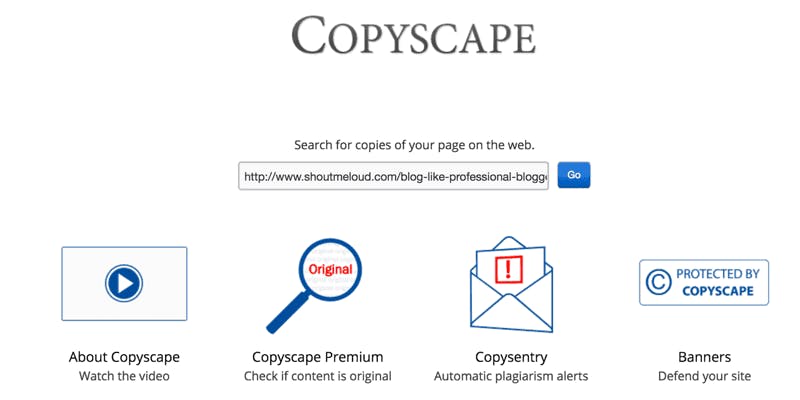
Copyscape is a plagiarism checker that helps ensure that your content is original. It scans the internet for duplicate content and checks your work against what it finds.
If Copyscape finds any copied content in your work, it will highlight it so you can make the necessary changes. Copyscape has both a free and premium version; the premium version offers more features, such as the ability to check more than one piece of work at a time.
Hootsuite: Social media management
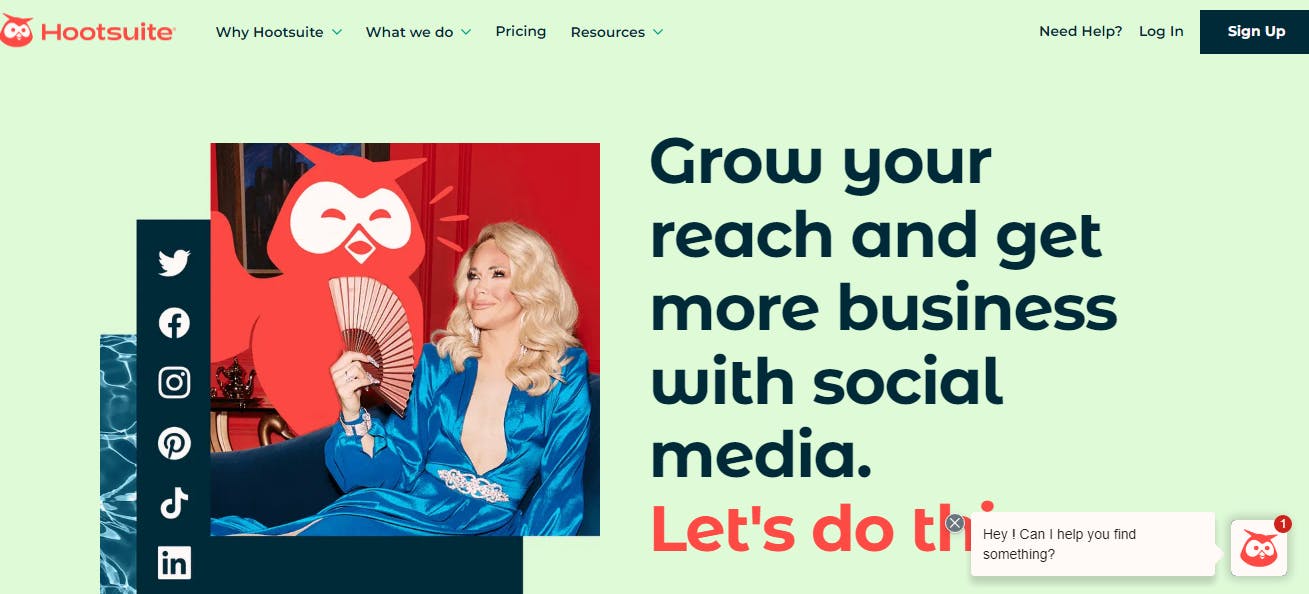
Hootsuite is a social media management tool that allows you to track all your social media channels in one place.
With Hootsuite, you can see who's talking about you online, schedule posts ahead of time, measure your social media engagement, and more.
Its pricing plans are affordable even to beginners who want to manage their social media accounts more effectively.
Vimeo: For video content
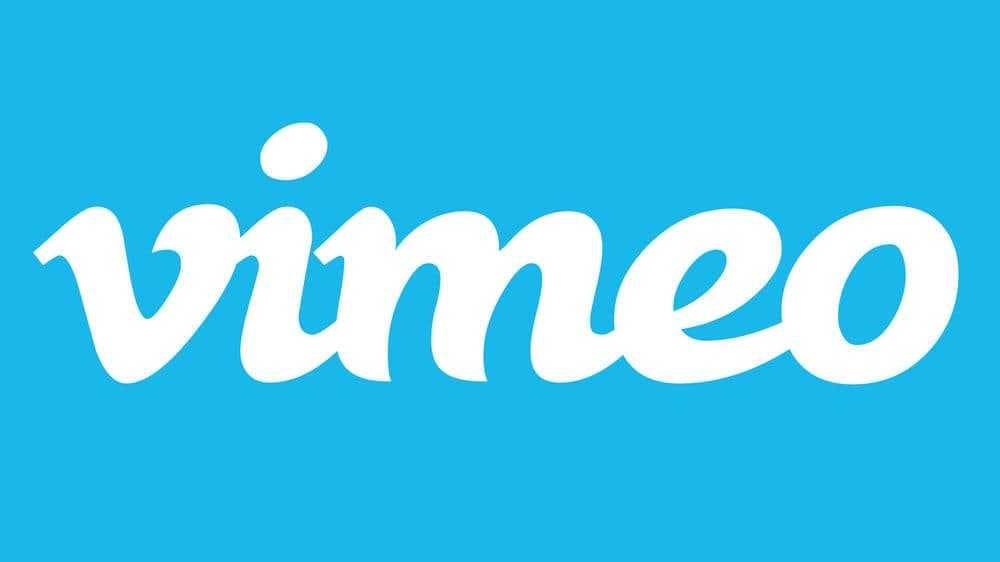
Vimeo is a great tool for creating, editing, and live-streaming video content. With Vimeo, you can easily create professional-looking videos without being a video editing expert.
Its live-streaming feature is also perfect for webinars, product launches, and other events.
Canva: Graphic design

Canva is a graphic design tool perfect for creating social media images, infographics, presentations, and more.
With Canva, you can easily create stunning visuals without any design experience. Simply choose a template and customize it to fit your needs.
Typeform: Forms and survey builder

Typeform is an excellent tool for creating forms and surveys. With Typeform, you can easily collect data from your audience, which can be valuable when planning and measuring your content's success.
Typeform's user-friendly interface makes it easy to create beautiful forms that engage your audience.
Anchor: For podcasts
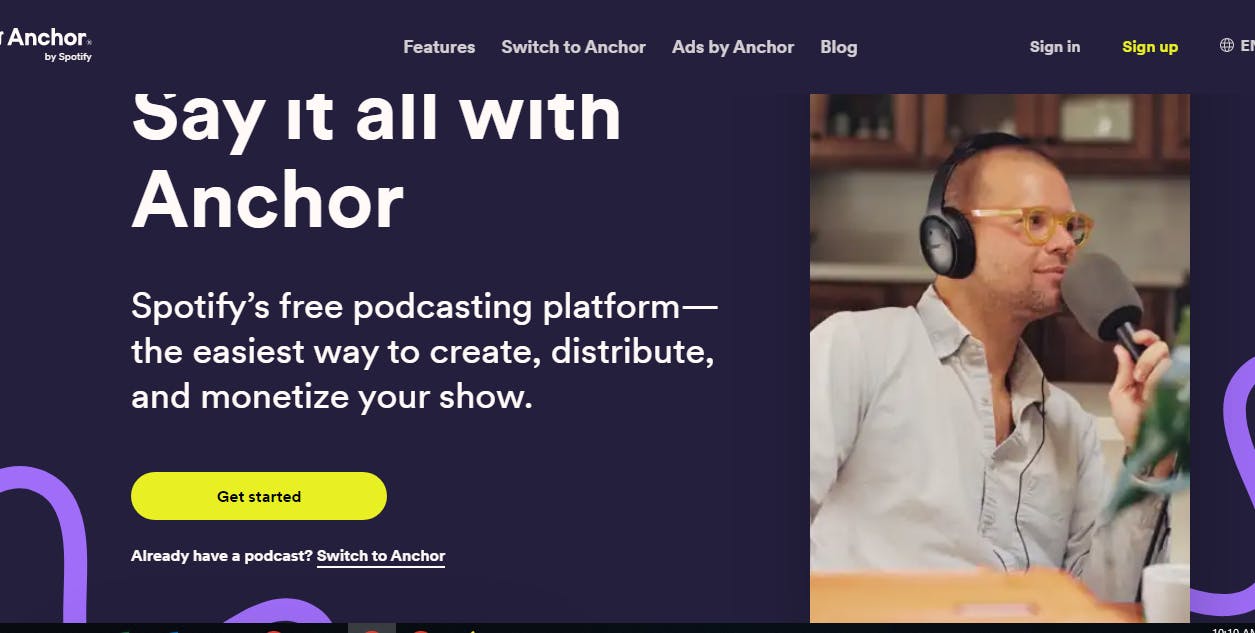
Anchor is an essential tool for creating and managing podcasts. You can easily record, edit, and publish your podcast episodes with Anchor.
Anchor's distribution features also make it easy to share your podcasts to different platforms for broader coverage.
CoSchedule: Content scheduling

CoSchedule is an all-in-one platform that helps you plan, write, optimize, publish, and promote your blog posts—basically everything from start to finish.
With CoSchedule's Headline Analyzer tool, you can ensure that your headlines are effective and will help you get more clicks and shares.
And with the ability to schedule social media promotion right from the platform, you can save yourself a ton of time by not having to switch back and forth between different tools.
What's the best platform for content creation?
If you want your content seen by a wider audience, you need to use the right content creation platform.
There are a lot of different content creation platforms out there that you can use. Some of the content creation platforms that content creators most prefer include:
WordPress

WordPress is one of the most popular content creation platforms on the internet. It's a user-friendly platform with many features and plugins to make writing and publishing content a walk in the park.
You can find predesigned themes and templates for your blog posts or create your own custom designs. WordPress also makes it easy to share your posts on social media and track your stats to see what's working and what isn't. Plus, completely free to use.
Medium

Medium is a blogging platform that many content creators love for its ease of use and clean design.
While it doesn't offer the advanced features that WordPress does, it makes up for this with its simplicity. Medium has millions of engaged readers, which means that your work has a chance to be seen by a lot of people if it gets picked up by the Medium curation team.
Substack
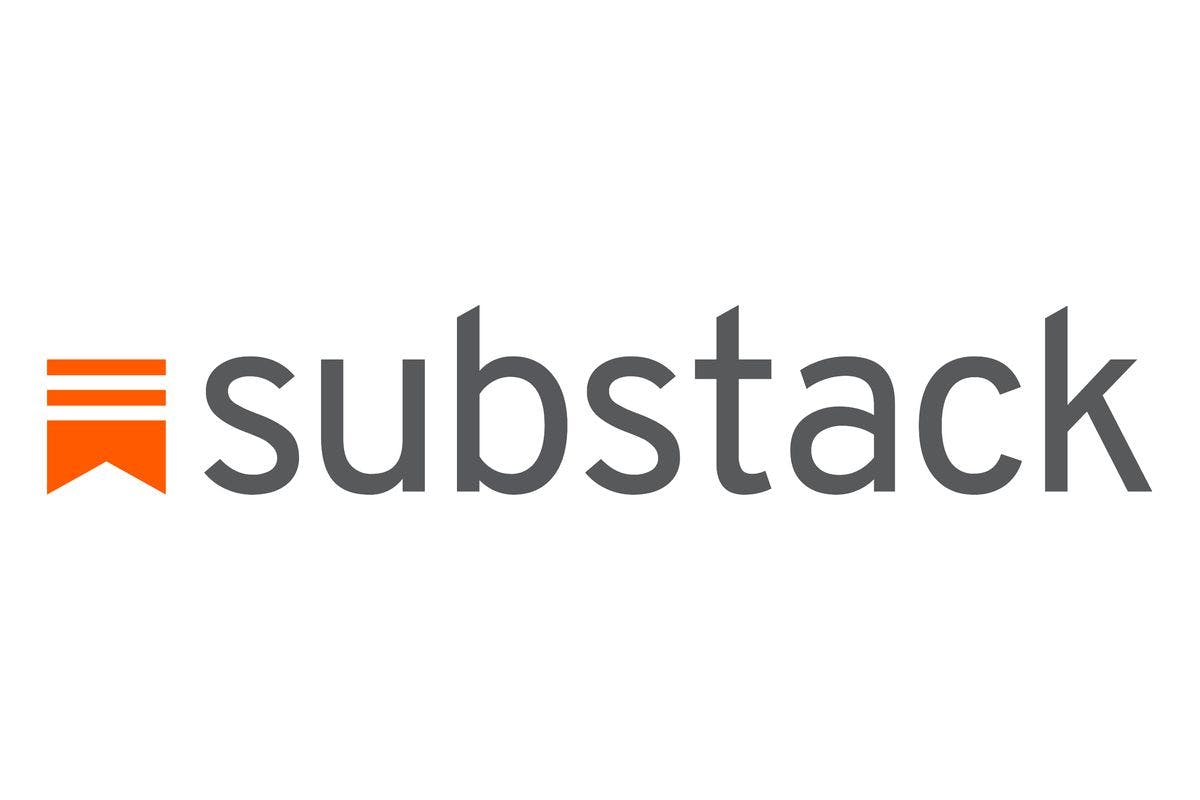
Substack is a newsletter platform that has gained much popularity in recent years. Many content creators have migrated to Substack in search of more control over their work and relationships with their readers.
Substack allows you to start a subscription-based newsletter where readers can pay to receive your exclusive content.
This model has proved to be very successful for many content creators, as it provides a steady stream of revenue that is not reliant on ads or sponsorships.
YouTube
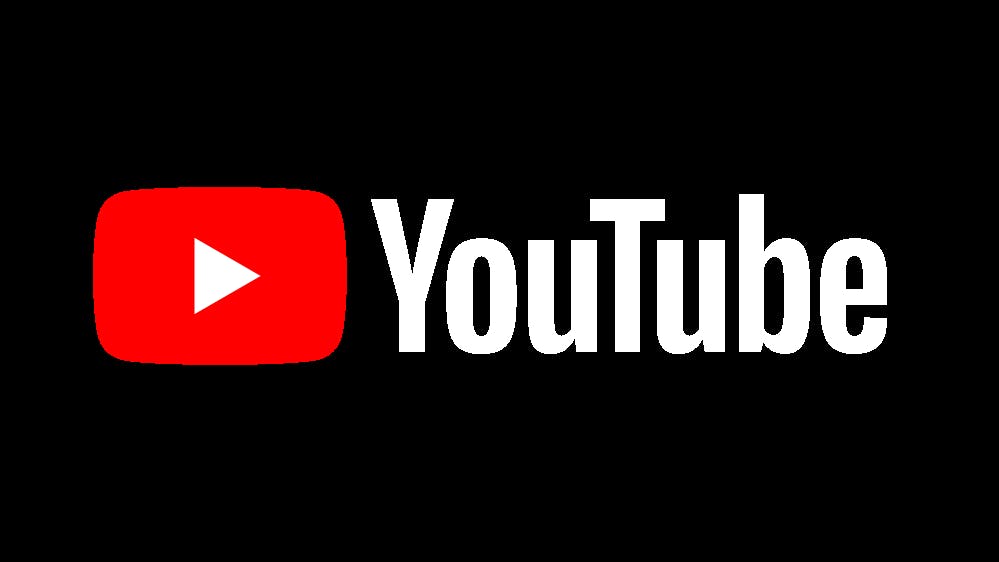
YouTube is the world's largest video creation and sharing platform, and it offers content creators a way to reach a massive audience with their work.
If you prefer creating video content rather than writing articles, this is the best platform for you.
YouTube allows you to create and monetize your videos through ads, sponsorships, and Super Chat (a feature that allows viewers to donate money to you while you’re live streaming).
You can also build up a loyal following on YouTube by regularly releasing high-quality videos and engaging with your viewers in the comments section.
How to tell if your content is high-quality
In a world where anyone can be a content creator, it's more important than ever to ensure your content is high-quality.
But what exactly does that mean? Here are six characteristics of high-quality content that will help you raise the bar.
- Clear and concise: High-quality content is clear and concise. It gets to the point quickly and doesn't meander off into tangents. Good writing is easy to understand and free of filler, fluff, and overly-complex jargon.
- Accurate: High-quality content should be accurate and error-free. This means all the facts, data, and statistics are accurate and come from credible sources.
- Well-researched: High-quality content should also be well-researched. When making claims, be sure to cite your sources so readers can fact-check you. Outdated information can make your content appear dated, so be sure to keep things current.
- Engaging: High-quality content is engaging and can hold the reader's attention from beginning to end. The best way to engage readers is by using strong storytelling skills or strong visuals (photos, infographics, videos, etc.) to add visual interest.
- Actionable: High-quality content should be actionable— after reading your content, readers should know what steps to take next to achieve their desired outcome— (e.g., Signing up for your email list or downloading your latest ebook).
Ensure your call-to-action (CTA) is prominently displayed and easy to find, so readers don't have to search for it.
What’s the ideal content creation team?
Creating high-quality content is not a one-man show— it takes a village!
That means finding the right mix of content creators with different skill sets who can work together to produce informative, engaging, and visually appealing content.
But what exactly should that team look like? Here's a breakdown of the ideal content creation team and each team member's roles.
Content manager/strategist
The content manager or content strategist is the person who oversees the entire content creation process from start to finish.
They develop the overall strategy and vision for the content team and ensure that all team members are on board. They also play a critical role in managing deadlines and ensuring that all content is published on time.
Content writers
Every piece of content needs a good writer who can capture the brand's voice and communicate its message in a clear and concise way.
Every content creation team should have a good writer who can extensively research various topics and make complex concepts easy for the average reader to understand.
You may decide to train your own writers or hire a writing agency like Startegically, which already has a team of trained writers to produce high-quality content for you.
Content editor
Once the content has been written, it's the responsibility of the content editor to come in and polish it up.
The editor will check for grammar mistakes, ensure that the tone of the piece is consistent, and ensure that the overall message is clear. They will also work with the graphic designer to add visual elements that enhance the article.
Graphic designer
A good piece of content should be easy on the eyes, which is where a graphic designer comes in. The graphic designer creates visuals —such as images, infographics, or charts — that complement the written content and help break up long blocks of text.
They will also ensure all visuals are properly formatted for different platforms (e.g., website, blog, social media).
Social media manager
Once the content has been created and published, it's time to promote it! That's where a social media manager comes in.
A social media manager develops a social media strategy that helps amplify the reach of each piece of content. They will also monitor different social media platforms for comments or questions from readers so that they can engage with them directly.
How much content should you create every day?
The amount of content you create daily will depend on your goals and objectives. One post per day should be sufficient if you're simply trying to maintain a blog.
However, if you're running a business and trying to attract new customers, you'll need to create more content. Most experts agree that consistency is key when it comes to content creation.
While there is no magic number, aim to create at least one piece of new content daily. This could be a blog post, a social media update, or even a few paragraphs for your website. The important thing is to keep the momentum going.
With time, it becomes easier and more enjoyable to produce high-quality content on a regular basis. Plus, your audience will appreciate the regular flow of new and interesting material. As long as you're providing value to your audience, you'll achieve your goals in the long run.
What is the cost of creating content?
Creating content can be a surprisingly costly endeavor. However, there are ways to create content without breaking the bank.
Some of them include
- Repurposing existing content.
- Creating evergreen content that continues to be relevant over time.
- Creating user-generated content by leveraging your audience.
Each option has its own advantages and disadvantages, but they can all help you keep costs down when creating new content.
While it may be tempting to try to save money by DIY-ing your content, this can often cost you more in the long run.
If you're not experienced in creating content, it can take a significant amount of time and effort to produce content that’s high-quality and engaging. As a result, it's often worth investing in professional help when creating content for your business.
Should I outsource my content creation?
A lot goes into a successful content marketing strategy. From developing personas to researching topics to creating and promoting content. There's a lot to do—and not enough hours in the day to get it all done.
So, should you outsource your content creation? Let's look at the upside of outsourcing content so you can make an informed decision for your business.
Free up your time
When you outsource your content creation, you free up time to focus on other aspects of your business while still getting high-quality content published regularly.
If you're the one creating all the content, that's a lot of time spent not working on other vital tasks.
Improve quality
Outsourcing content creation also means outsourcing the responsibility for quality control. This means that it's not on you if there are any errors or issues with the final product.
Additionally, when you work with a professional content creation team, you can be sure they will use best practices and deliver high-quality output.
Get an outsider's perspective
When you are too close to a project, it can be difficult to see it from an outsider's perspective. This is one of the benefits of outsourcing your content creation.
An outside perspective can help identify areas where your message may get lost or where the overall tone needs to be changed.
Get better results
When you outsource your content creation, you have the opportunity to work with professionals who know how to create successful content.
This means that not only will your content be of better quality, but it will also be more likely to achieve your desired results (whether that's more website visits, higher conversion rates, or something else entirely).
Save money in the long run
Yes, outsourcing content creation will cost you money— but it's cheaper than hiring a full-time employee to handle your content needs.
And since quality content can help you attract and convert more leads, outsourcing to reputable a content writing agency like Strategically can actually save you money in the long run and generate more revenue for your business in less time.
Content repurposing
If you're like most content creators, you probably spend a lot of time coming up with new ideas and creating original content.
But what happens to all that content once it's published? In most cases, it just sits there collecting dust.
The best way to make good use of this old content is to repurpose it.
What is content repurposing?
Content repurposing is the process of taking existing pieces of content and refreshing them for a new audience or format.
When you repurpose your content, you breathe new life into old content, increase your reach, and engage with your audience in new and interesting ways. The process of repurposing old content is interesting and a lot easier than you may think.
Benefits of repurposing content
The benefits of content repurposing are numerous.
- Cater to a larger audience: For starters, it allows you to reach a wider audience by catering to different types of content consumers.
Some people prefer to consume information via video, while others prefer text or audio. By repurposing your content, you can ensure that everyone benefits from your content in a way that suits them best.
- Save time and energy: Once you've created original content, you can use that same piece repeatedly without having to start from scratch each time.
This means you’ll spend less time brainstorming ideas and more time actually creating valuable content for your audience.
- More traffic: Repurposing old content can also help drive traffic to your website or blog from new sources.
For instance, if you create a YouTube video based on an old blog post, you can include a link to your website in the description box.
This will introduce your website to people who may not have found it otherwise - and who knows, they might just become regular readers!
How to repurpose content
There are many different ways to repurpose old content and create a new life out of them:
Create an eBook from your blog posts
One simple way to repurpose your old blog posts is to turn them into an eBook or PDF guide. This is a great way to compile all your best tips on a specific topic into one comprehensive resource that your readers can refer back to again and again.
For instance, the skincare brand, Dermalogica, does a great job with its Clear Start ebook, which contains its best acne-busting tips and advice.
Turn a series of blog posts into an online course
If you have a series of blog posts on the same topic, you can quickly turn them into an online course.
An online course is a great way to monetize your existing content while providing value to your readers. Melyssa Griffin's Pinfinite Growth course is a great example of this in action. It takes readers through the process of growing their Pinterest following step-by-step using Melyssa's tried and tested methods.
Create a video series from your written content
Another great way to repurpose your blog posts is to turn them into videos. This is especially useful if you have informative how-to-style posts, as viewers are often more engaged with video than written text.
ArticleVideoRobot makes it easy to create videos from existing written content with the click of a button, so it's definitely worth checking out if you're looking for an easy way to get started with video content creation.
When repurposing content, be sure to add new insights or perspectives that weren't present in the original piece.
This will ensure that even people who read or watched the original will find something new and valuable in the repurposed version.
Finally, don't be afraid to have fun with it. Repurposing old content doesn't have to be a tedious process — think of it as an opportunity to get creative and try out new things. Who knows — you might just discover a new passion in the process.
Conclusion
Investing in quality content is essential if you want your website or blog to rank higher on SERPs and attract more leads. From all the concepts discussed in this post, you should now be able to create informative and engaging pieces of content for your audience.
However, suppose you’re feeling overwhelmed by the task of creating content for your website or blog, you can outsource your content writing to Strategically, a professional content writing agency that can handle all the work for you— from research to writing and publishing.
At Strategically, we have a team of experienced writers dedicated to helping you create high-quality, engaging content that will help your business grow. Reach out to us today and get a free quote on how much is would cost to outsource your content creation to us and start taking your content marketing to the next level.




